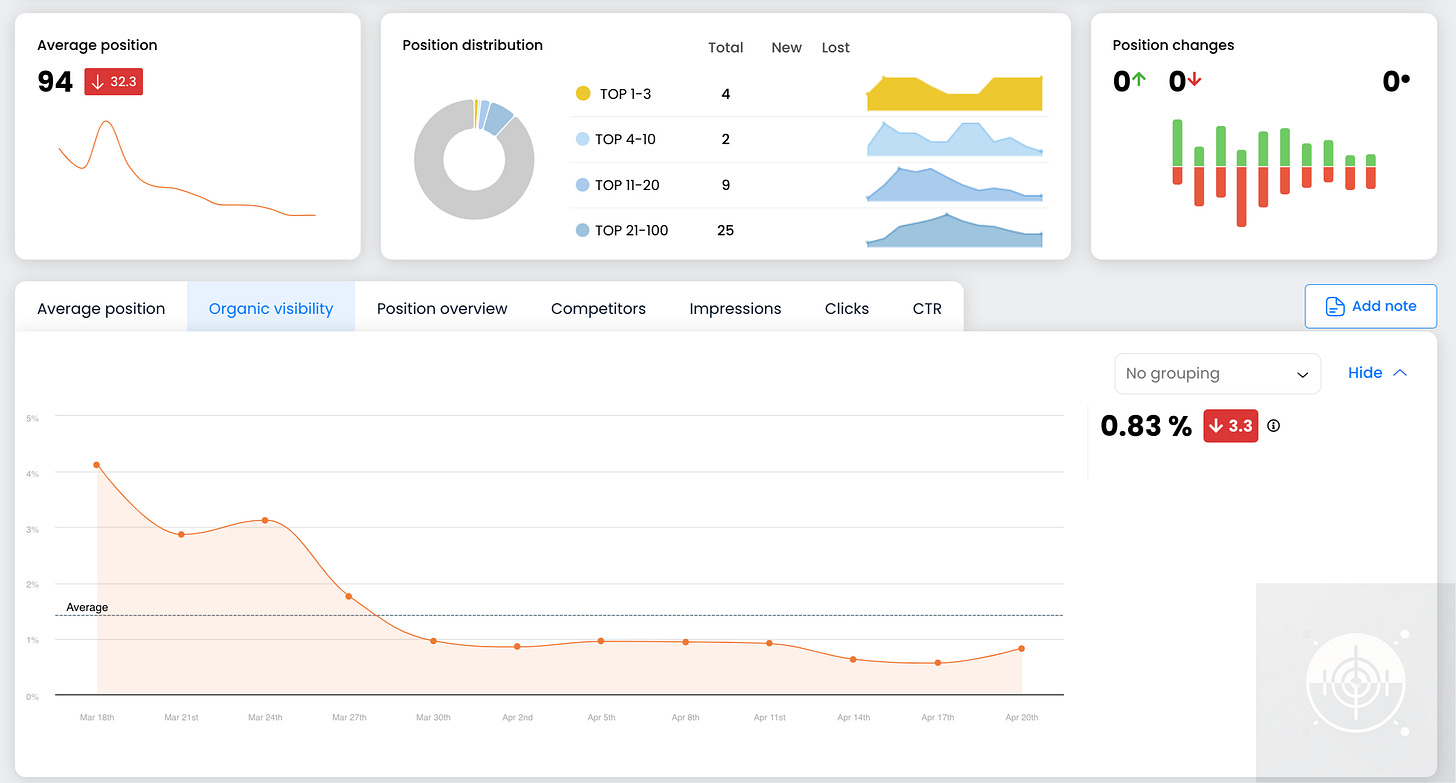I Built an AI SEO Engine. It Worked—Until Google Crushed It.
The future of SEO isn’t anti-AI. It’s anti-lazy | A Case Study
Four weeks ago, I decided to run a live SEO experiment.
Not a simulation. Not theory.
A real-world test using an aged, trusted niche website—this time, powered entirely by AI.
I wanted to see:
Can AI-written content still rank on Google in 2025?
And more importantly: Is Google truly cracking down on “low-quality” AI content… or just saying it is?
So I ran an experiment. And what I found was… surprising.
The Setup: A Real Site, a Real Test
I’ve had a niche real estate site for several years. It was never a massive traffic driver, but it had a solid foundation:
Clean domain structure
High-performing legacy articles (written by me)
One article in particular ranks top 3 for a few competitive keywords—and still brings in daily traffic
That site became my sandbox.
I wanted to test what happens when you scale content with AI—but follow all the SEO rules.
Over 3 weeks, I published 5–10 articles per day, all generated by AI and supported by:
✅ AI-generated images
✅ Internal linking and topical clusters
✅ External citations (.edu/.gov)
✅ Optimized metadata and alt text
✅ Lightning-fast hosting via Ghost CMS
Basically: everything Google says it wants—minus the human authorship.
Week 1: The Honeymoon Phase
At first, the results looked promising.
📈 Rankings climbed rapidly
🚀 Impressions spiked
🔝 Dozens of new posts hit positions 5–20 in search results
The momentum was very real.
And honestly, I was impressed.
It looked like high-quality AI content—done right—could still absolutely win in the SERPs.
Until it didn’t.
Week 2–3: The Breakdown
Just as quickly as the rankings appeared, they vanished.
👻 Visibility tanked
📉 Impressions nosedived
❌ Most articles dropped beyond position 100 (aka: invisible)
Only a few remain between position #10–99.
It’s unclear if they’ll recover—or if they’re next to be buried.
What I Haven’t Done (Yet)
To be clear, this test isn’t complete.
There are still several elements I haven’t introduced—factors that could improve the AI content’s survivability:
– ✅ Fully built-out topic clusters (currently only partial)
– ❌ Fresh, high-quality backlinks pointing to AI content
– ❌ Off-site content strategy (Pinterest, X, Reddit)
– ❌ Clear E-E-A-T signals (experience, authorship, authority)
These are all known trust/authority builders.
But even without them, the early signal is already loud enough to pay attention.
What This Really Tells Us
👉 Google isn’t just filtering AI content.
It’s evaluating content ecosystems.
That means:
Thin, templated, fast-spun content—even if SEO-optimized—isn’t enough
Authority and authenticity matter more than ever
Scaling with AI is only sustainable if it’s supported by structure, depth, and trust
This is not the end of AI content.
But it is the end of the “fast-and-loose” model.
The Big Lesson
The future of SEO isn’t anti-AI.
It’s anti-lazy.
You might win the first battle with AI-generated content.
But if your ecosystem is hollow?
Google will come for it—sooner than you think.
What’s Next?
This experiment is ongoing.
In the coming weeks, I’ll be testing:
✅ Full cluster completion
✅ Targeted backlink outreach
✅ Off-site content support
✅ Experiential content (adding first-person and “real” authorship layers)
If you’re experimenting with AI and SEO too—or just curious what actually works in 2025—stick around.
Better yet, drop a comment and I’ll share more behind-the-scenes detail.
This Is Just the Beginning
I didn’t run this test to prove a point.
I ran it to learn what’s actually working—and what’s not—in an algorithmic landscape that’s shifting faster than most creators or marketers realize.
What I’ve seen so far?
AI content isn’t dead.
But it can’t coast.
If you’re treating AI like a shortcut instead of a tool for scale + structure, you’ll get burned.
That’s what this sandbox experiment is about:
Building something at scale—intelligently—and stress-testing every piece of modern SEO advice.
Upcoming Deep Dives I’ll Share
📑 How I actually structure and template my AI articles (with examples)
🔗 The backlink strategies I’m testing—what’s moving the needle (and what isn’t)
📊 Google Search Console snapshots, week-by-week
🧠 What I’m learning about authorship, trust, and E-E-A-T signals
🛠️ How I’m blending AI + human content into a system that scales without collapsing
These aren’t high-level summaries.
They’re the real workflows, data points, and play-by-play learnings I don’t post publicly.
TL;DR Recap
AI content can rank—but often temporarily
Without depth, trust signals, and structure, it collapses
Google isn’t hunting AI—it’s hunting shallow execution
The path forward? Smart ecosystems with AI as the engine, not the excuse
If you want my full backend content framework (from prompt structure to linking logic), reply or leave a comment below. I’ll share the good, bad, and nerdy.
👋 More to come.
– Chris







Let me ask you this - and yeah this probably going to piss you off. What is the danger of what you do? I actually saw very particularly AI generated material which I knew to be fake but still is google worthy - the group anonymous had been high jacked by the Trump campaign for votes. This experiment is building a truth machine to untruth truth.